Artificial grass – all you need to know about costs and how to lay a faux lawn
Experts answer common questions to help you decide if fake grass is for you

Millie Hurst
We all know that having a natural lawn in our back garden is the ideal scenario when it comes to supporting wildlife. However, for many households, artificial grass is the most realistic option.
Maintaining a luscious lawn can be a labour of love, and not everyone is able to keep on top of mowing, weeding, and watering. For those with small spaces, busy lifestyles, young kids and pets, faux grass has plenty of plus points.
Artificial grass
While it gives a similar sensation underfoot to real grass, the fake kind certainly leaves you with more time to enjoy your garden. It also makes muddy messes and grass stains a thing of the past. The only upkeep most requires is a monthly brush and hose-down, as well as bi-annual weedkiller treatments.
'As long as you maintain your grass regularly, ensuring you clean up after spills, pets and are treating weeds prior to installing your fake grass, there will be no problems with its appearance, texture or smell,' says Jessica Fox at Grass Direct. Are you currently brainstorming garden landscaping ideas and wondering whether to ditch traditional turf? Keep scrolling for expert advice and factors to consider.

How to lay artificial grass
You can lay artificial grass yourself, just remember to pay attention to pile direction. 'To achieve the best, visually appealing results, face the blades of grass in the direction of your vantage point,' comments Grass Direct.
‘Align your rolls of lawn, laying them with the pile leaning in the same direction across each roll for consistency and to make joins less noticeable.' While companies use different installation techniques, the basics are the same – what you’re trying to achieve is a stable base to stop the grass from shifting and prevent weeds from growing through.
Most achieve weed reduction with a layer of membrane being laid initially. If there’s no perimeter for the grass to butt up to (such as a fence or your decking ideas), it’s a good idea to add a timber or steel edge to frame it. This will give a crisp, professional finish to your garden ideas.
Sign up to our newsletter for style inspiration, real homes, project and garden advice and shopping know-how
Next, you’ll need to create a sturdy base, usually with sand or a similar aggregate that’s compacted down to make it level. Finally, you can unroll your grass – make sure the rolls lay in the same direction so the blades point the same way.
It can be glued or pinned into place and ruffled to disguise joins. Top tip: if you do take the DIY route, measure the area you want to cover, plus 5cm extra all the way around – the grass can be trimmed later on.
What do you put under artificial grass?

Builders’ sand and a weed membrane is the perfect combination when laying your artificial grass, according to Grass Direct. Silica sand beneath your faux grass will help protect it from UV rays, keeping it looking good for longer. Acrylic sand, on the other hand, is especially effective when it comes to preventing bacteria and nasty odours.
Adding proper drainage beneath your turf should be your number one priority when laying it, adds Gena Lorraine from Fantastic Services. ‘Seriously, don’t skip out on this! A poor drainage system can lead to a lot of problems and headaches,’ she warns.
To prevent pools of dirty water from accumulating over your garden’s surface every time it rains, dig a deeper soakaway at the front of your lawn and fill it with rubble. Then, cover everything using the usual 75mm sub-base, Gena advises.
This way, in the event of heavy rain, the hole with the rubble will act as an underground reservoir. It will hold the rainwater and then evenly disperse it back into the soil underneath your artificial grass.
How much does artificial grass cost?
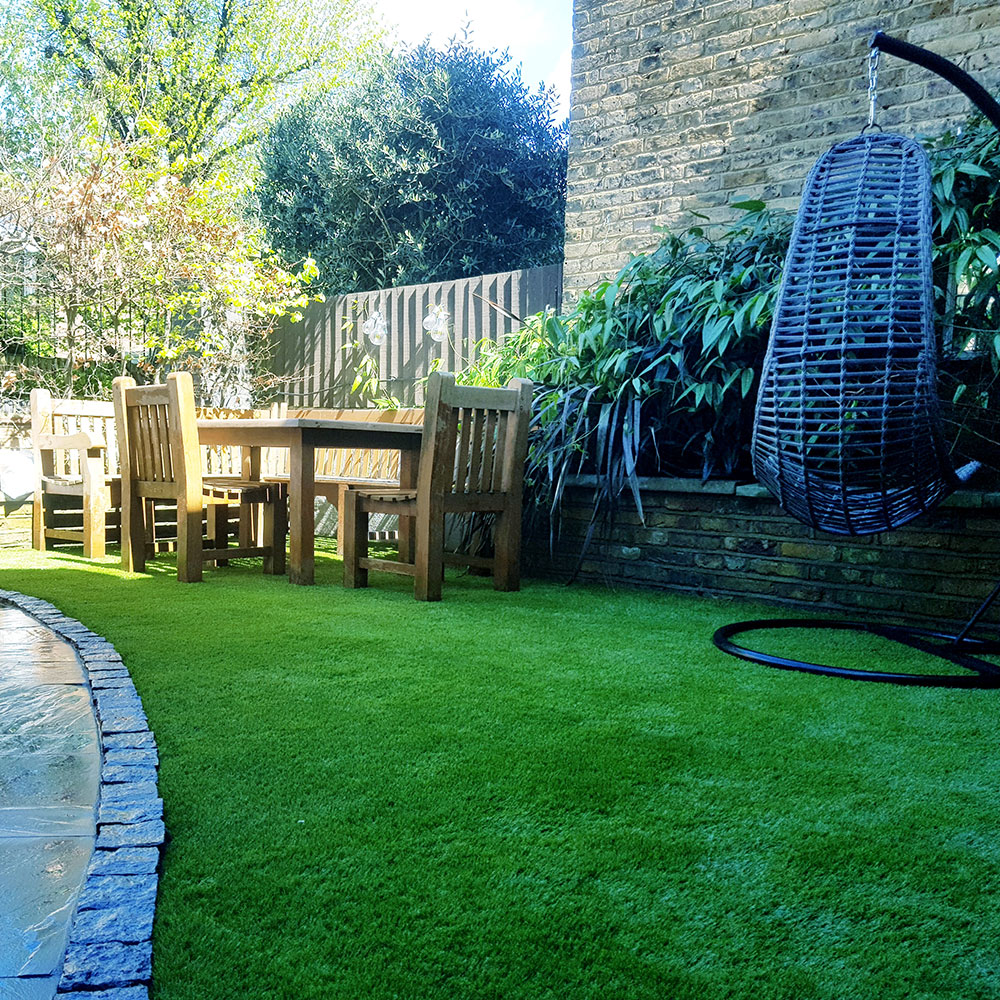
According to Evergreens UK, for a high-grade landscaping item, you are looking at £27-£33 (inc VAT) per square metre. For a mid-range, around £15-£22, and for entry-level around £12.
Installation is typically between £55-£75 inc VAT (depending on the grade) for an average size lawn of around 50m2. If fake grass is out of your budget and you already have some lawn space, read our lawn care tips to make the most of what you’ve got.
What types of artificial grass are available?
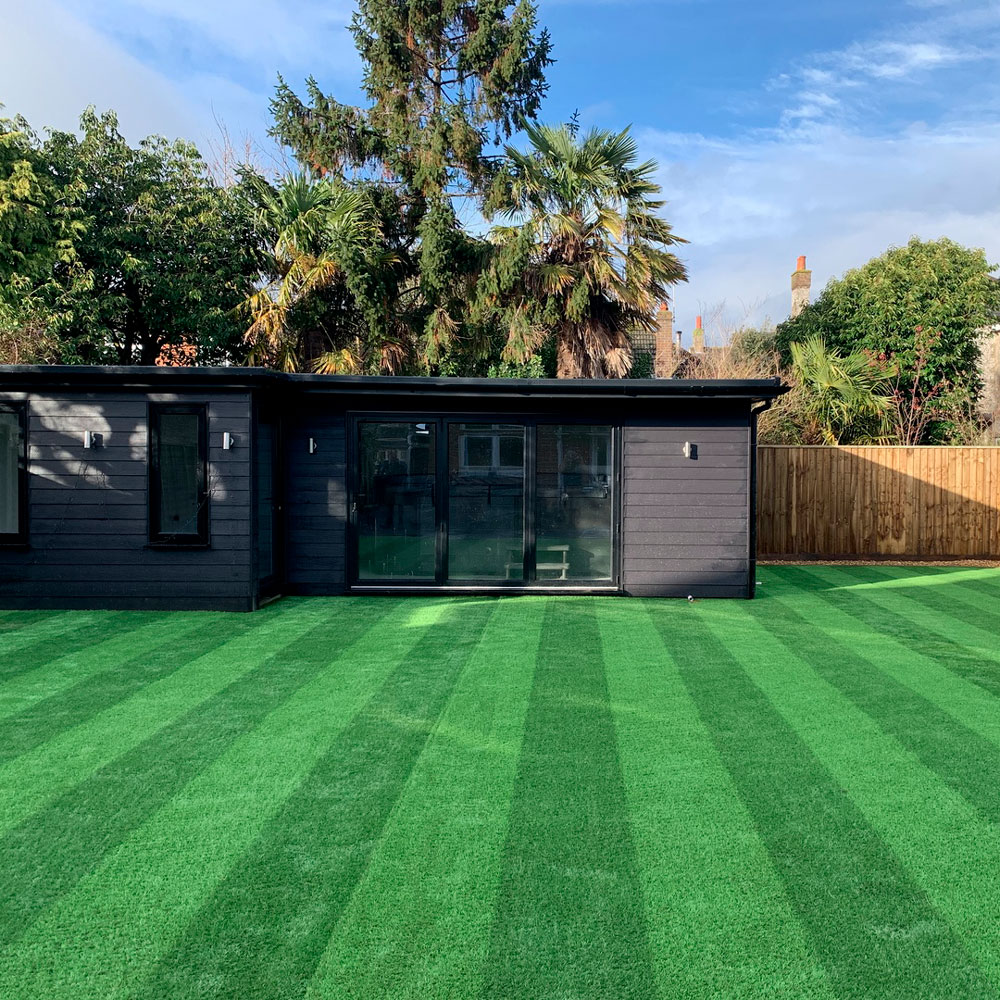
Artificial grass comes in different designs, thicknesses, and shades to suit a variety of uses – there’s no ‘one-grass-fits-all’. For example, softer grass feels more like the real thing, while harder materials suit heavy traffic areas. Handy, if the kids like your lawn to double as a mini Old Trafford.
Artificial grass can be bought on the roll or cut to size. It’s priced to suit different budgets and available in a range of designs and 'pile' lengths. If you are joining different lengths to cover a larger area you will need to buy a joining kit.
Most synthetic turf consists of three layers: a drainage layer, a multi-layered backing in jute, plastic or polyester and nylon or polypropylene 'grass' blades. Some artificial products are infilled with a granular filler to resemble natural turf.
Artificial grass pile type
'Pile type, also known as yarn shapes, play a big part in the overall appearance' explains Jessica Fox at Grass Direct. 'C-shaped allows the grass to bounce back after experiencing foot traffic. Diamond-shaped yarns give a smart and uniformed ‘freshly cut’ look. L-shape are the softest to touch and give a natural finish, and multi-shape combines four yarn shapes to produce the most realistic looking grass.'
Artificial grass pile height
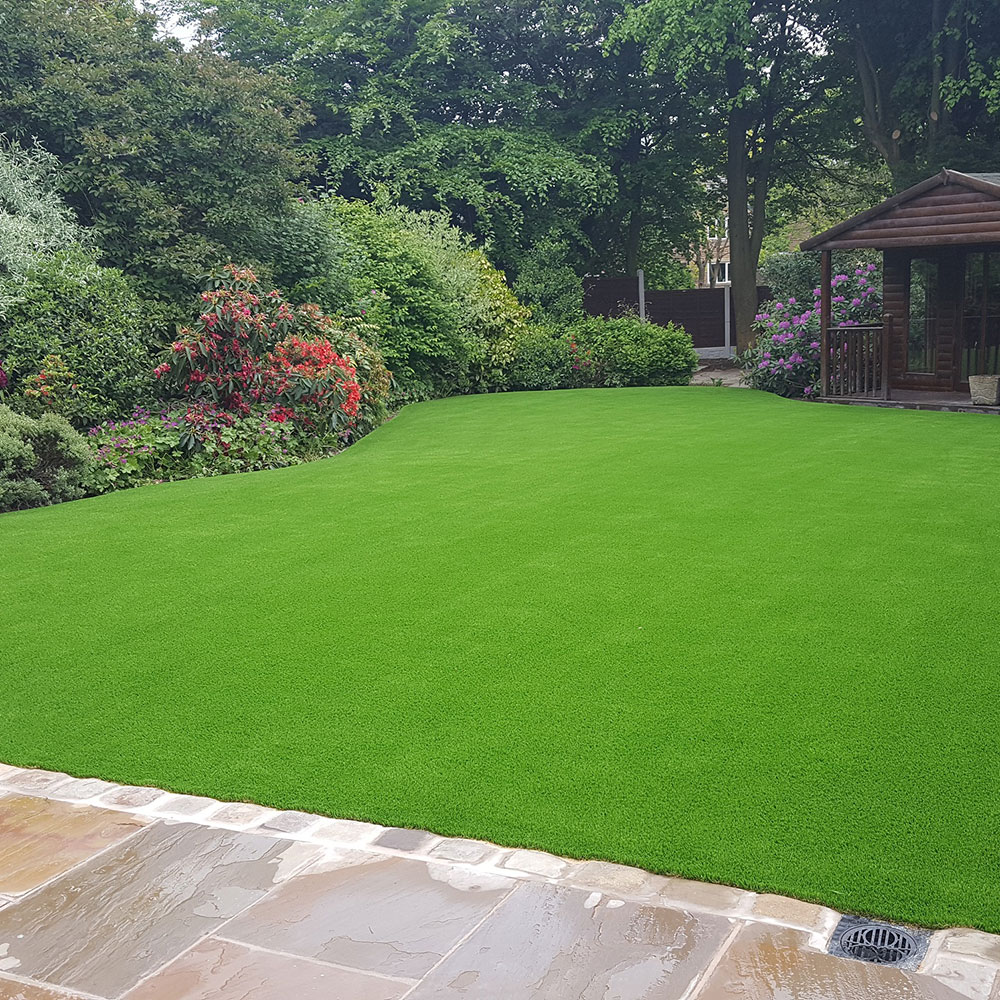
'Pile height refers to the total length of your artificial grass from backing to the tip of the blades, and plays a big role in the overall look and feel of your artificial grass. If you want a neat and tidy finish with that fresh-cut look, then a shorter grass (16-27mm) is the most suited option' Jessica advises. 'It is also well suited to families with pets and children and those keen sports players.'
'For a fuller, more luxurious look, we would recommend opting for a pile height of 30-37mm.'
Artificial grass pile density
'Pile density refers to the number of fibres that are stitched to the artificial grass backing and how close together they are packed,' Jessica explains. 'Medium density piles are usually somewhere between 15000-18000 stitches per square metre. This type of pile density is great for your typical demands such as children, pets, and families who spend a lot of time in their garden.'
Where can I buy artificial grass?

If you fancy doing it yourself, Carpetright offers a range of polypropylene and polyethene artificial grasses from just £12 per sq m, with installation guides online.
Grass Direct is the UK's largest artificial grass supplier with a wide range of great products, for every budget.
LazyLawn has the UK’s largest installation network, so there’s a good chance of finding an expert on your doorstep. It offers a wide range of colours, textures and pile heights, too.
Easigrass has won six RHS awards for product and design, and supplies and installs artificial grass worldwide. It’s even developed faux grass with manicured stripes for a pro-mown appearance.
Instead of jumping into buying the first artificial grass you like the look of, we highly recommend you order samples first. This will allow you to compare colours, length, softness and quality. Think of buying grass in exactly the same way you would when buying carpet – try before you buy.
How long does artificial grass last?
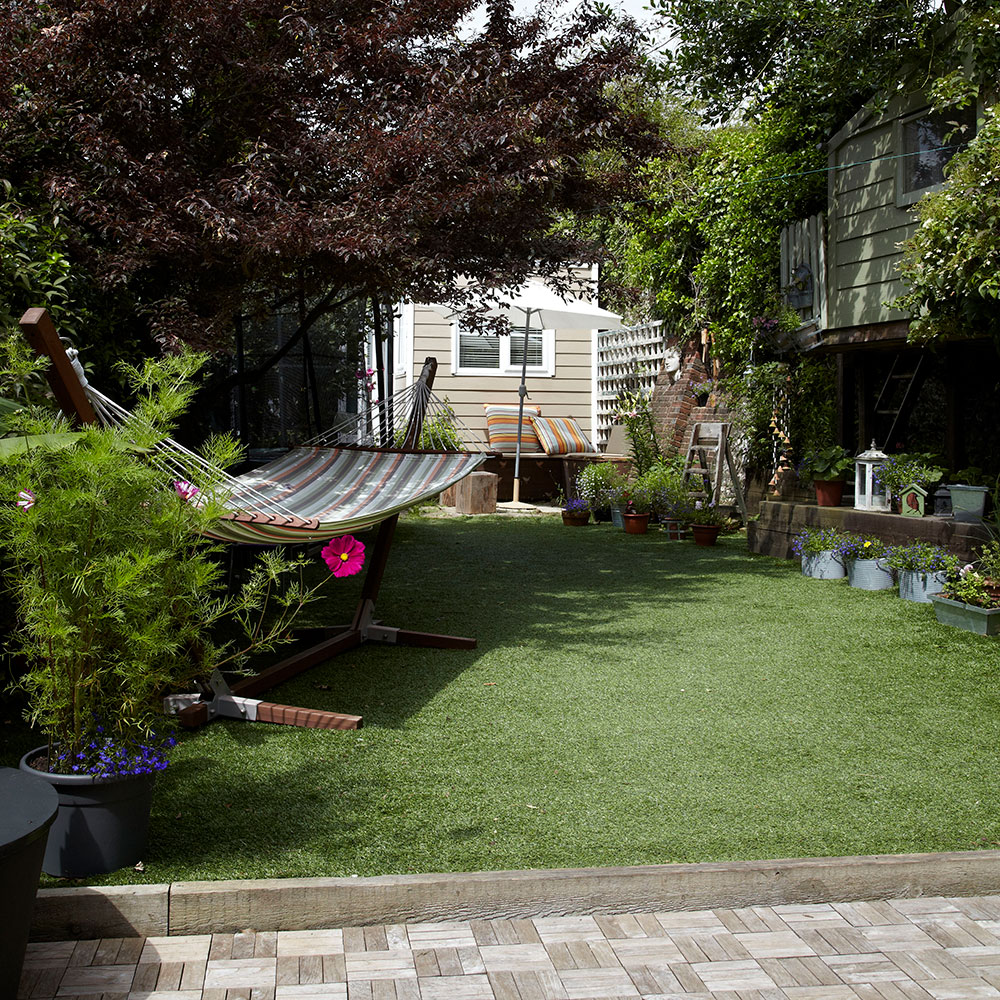
Faux lawns can last up to 15 years with regular TLC, but it’s important to choose a quality lawn and to install it properly. To keep it looking its best, read up on how to clean artificial grass and remember to remove debris regularly as this can puncture the mesh fabric.
Is artificial grass good for dogs?
'Artificial grass is not only perfectly safe for dogs, but also safe for other pets,' says Josh Barber, Buyer at Grass Direct. 'Artificial grass is often a better solution for dog owners than a traditional lawn. Its constant length gives the ideal play area for your dog and it’s hard-wearing and resilient to the rigours of pet life.
'Thanks to the synthetic nature of artificial grass, you avoid the need for harmful chemicals such as weed killer and pesticides, making it a suitable and safe environment for which to keep your pets.'
Can artificial grass be laid on a slope?
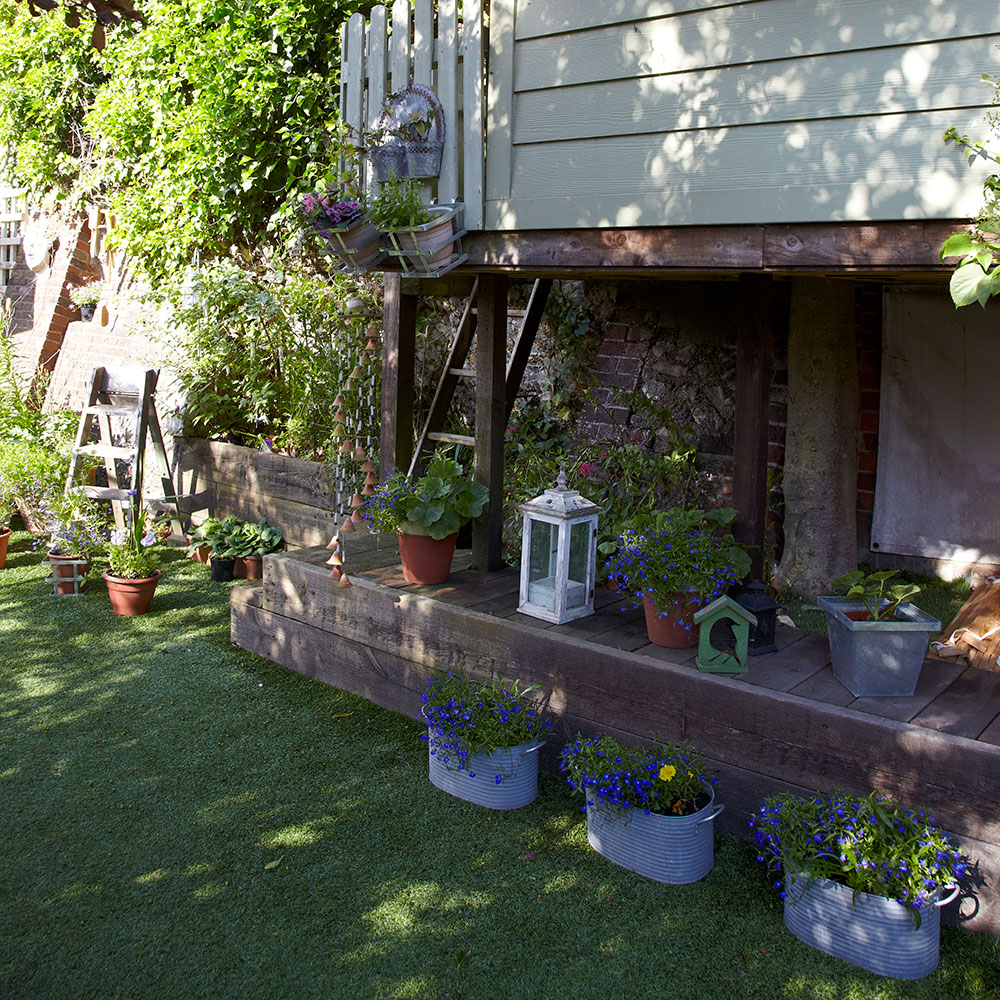
‘Artificial grass can be laid on a slope,’ says Josh Barber at Grass Direct. ‘With some extra fixing spots at the top of the slope, installation is similar to laying artificial turf flat.’ Josh says you can also lay it on concrete or soil, as long as grit, debris, or vegetation doesn’t get in the way.
Does artificial grass get hot?
'Artificial grass is engineered to be resistant to high temperatures, so on hot and dry days you needn’t worry about a brown lawn,' says Grass Direct. 'Moreover, shorter pile heights and lighter colours can help mitigate higher temperatures.'
That said, artificial turf can get warm on foot. Despite it not being as hot as brick, concrete or decking, Grass Direct advise light footwear is worn, especially on children. The artificial grass experts warn against letting pets walk over artificial grass when it’s particularly hot, due to their sensitive paws.
Why do you need to put sand on artificial grass?
Some dense designs may not need infill – a layer of sand brushed on top to weigh the grass down. But for most installations, it’s a crucial finishing touch that will give a professional look. As well as holding the grass in place, it’ll protect it against dogs clawing at the base. It also keeps the grass cooler in the summer as sand dissipates the heat.
Can I hoover artificial grass?
Josh Barber, Buyer at Grass Direct advises against using a vacuum cleaner on artificial grass. ‘Use a rake or brush with a soft-headed brush instead, so it doesn’t become intertwined with the grass blades or play havoc with your drainage system.’
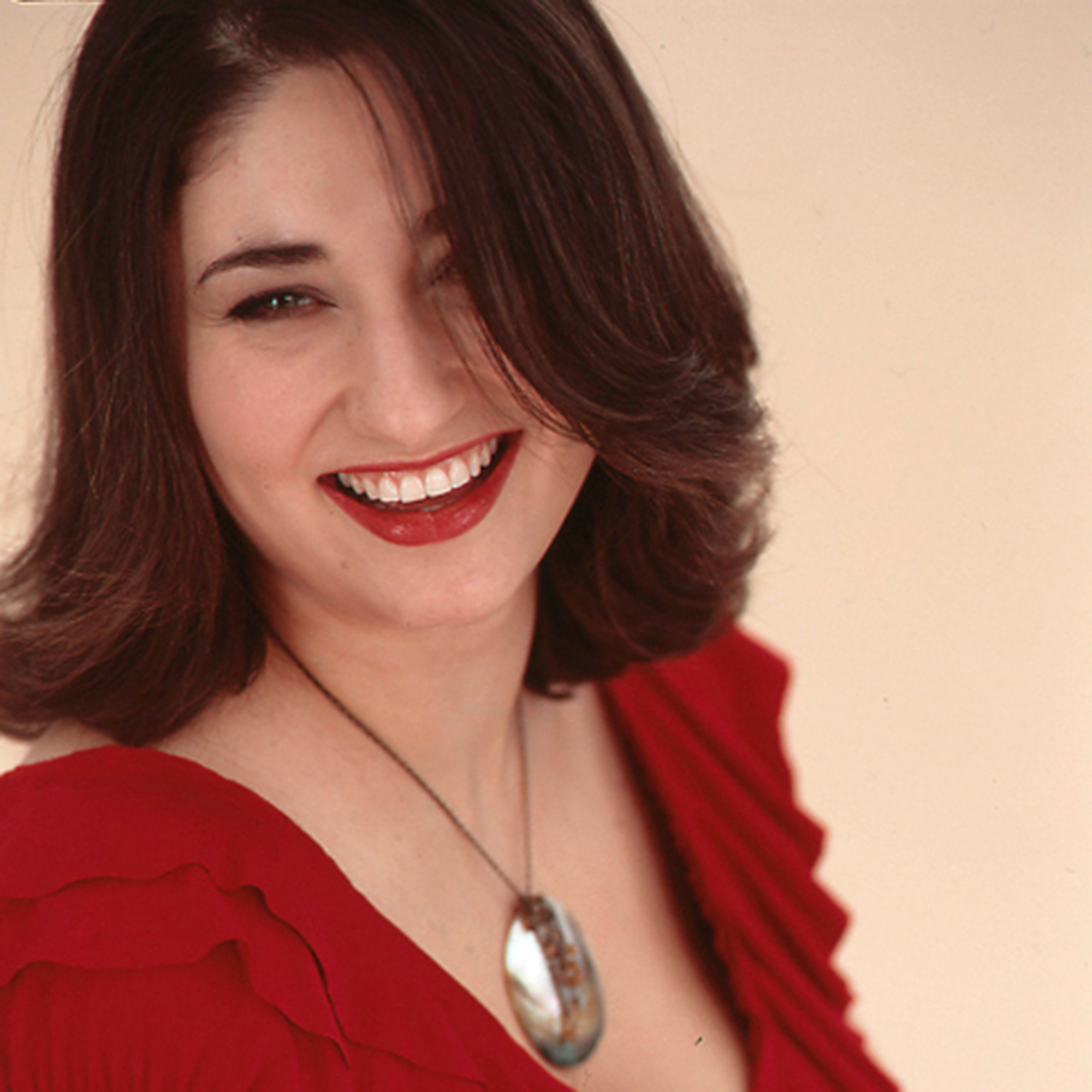
Rachel Ogden is a freelance journalist with more than 20 years’ experience of writing, editing and sub-editing. Since 2007, she's worked exclusively in interiors, writing about everything from extending your home to kitchen worktops, flooring, storage and more. She specialises in product reviews, having reviews hundreds of small and large appliances and homeware.
- Millie HurstSenior Content Editor